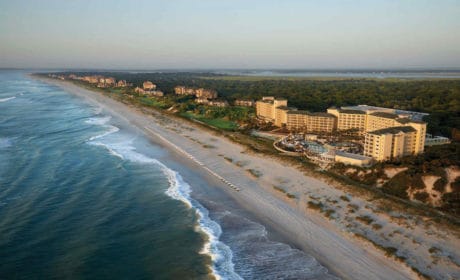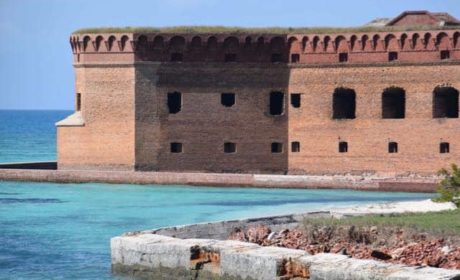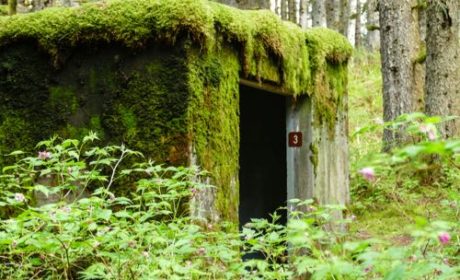Do you enjoy a historical setting that’s in a walkable city located in a semi-tropical climate? Then exploring historic St. Augustine is for you.
Through the years at My Itchy Travel Feet, our writers have introduced you to Early American history in Massachusetts, some fun things to do in Fredericksburg, VA, and now the Spanish colonial history of St. Augustine.
James Richardson recently took us to New River Gorge National Park in West Virginia. Now he’s back with tips for exploring St. Augustine, Florida.
Table of Contents
Historic things to do in St. Augustine
Do you know what happened on March 27, 1513? Or September 8, 1565? Do you know who Don Pedro Menendez de Aviles is? What has this got to do with a travel destination?
My wife and I did not know the answer to those questions when we planned our trip to St Augustine, but we found out. A visit to the nation’s oldest city is a lesson in early Florida history, and early American history.
Who founded St. Augustine, Florida?
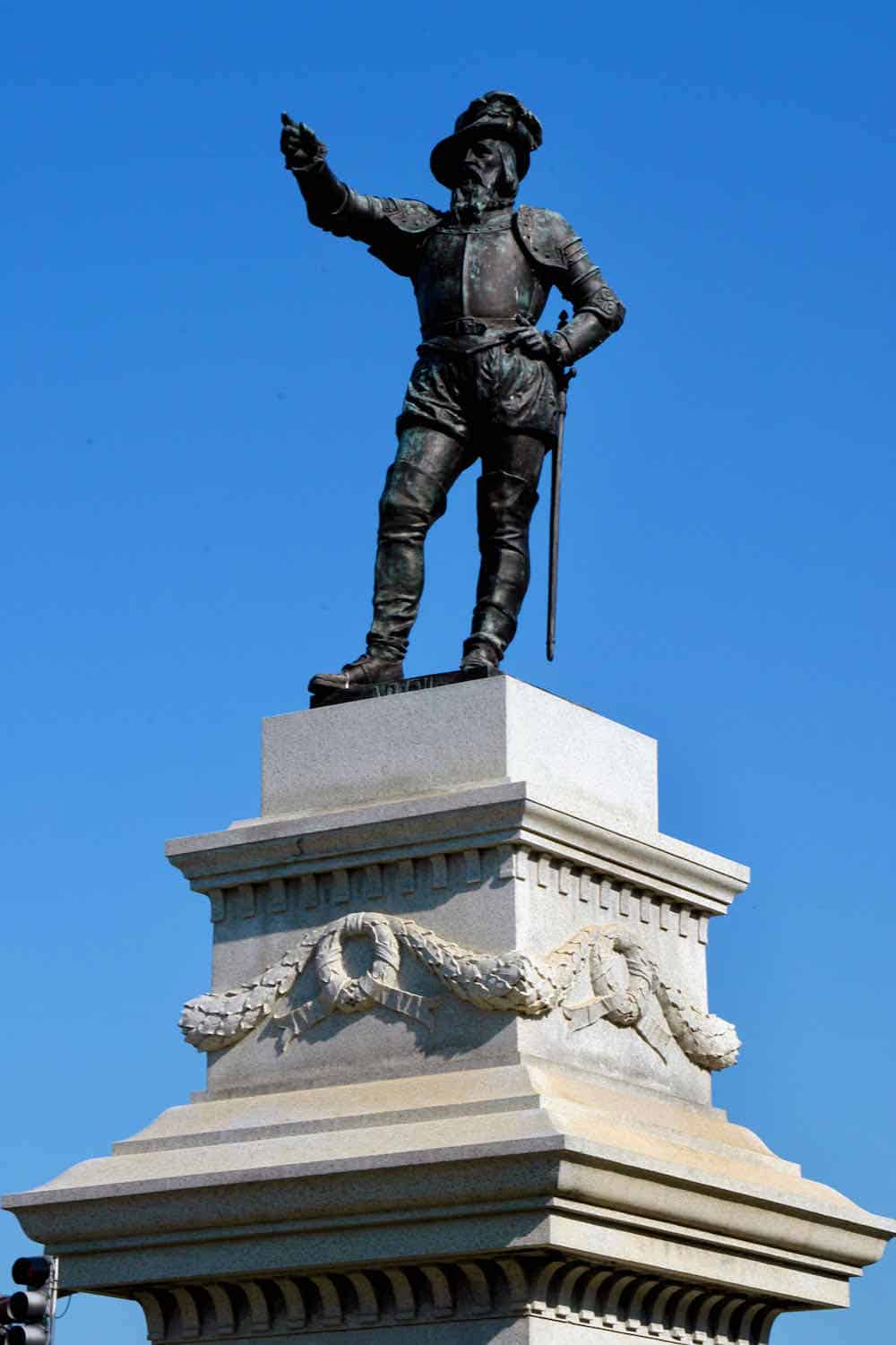
Here is a little history. On March 27, 1513, Don Juan Ponce de Leon discovered Florida while exploring in search of land and treasures to claim for Spain. Fifty-two years later on September 8, 1565, Don Pedro Menendez de Aviles reclaimed the land for Spain.
He established the city of St. Augustine and named it for the saint whose feast fell on August 28, 1565, the day he first sighted land. Such were the Spanish beginnings.
As the travel brochures and the tour guides are quick to point out, St. Augustine does not claim to be the oldest city in the United States, but the oldest continuously occupied European colony. Either way, St. Augustine is filled with history – over four hundred years of it.
Exploring historic St. Augustine

From its Spanish beginning, which is evident in its architecture, to the city’s modern attractions, we found plenty to do in St. Augustine. And much of it is all within easy walking distance of town center. The region’s official tourism website , Florida’s historic coast, has information of attractions, places to stay and restaurants.
Many attractions in the historic district show Spanish influences in its architecture. The original City Gates are still standing and were the only way into the city from the north.
They were built by the St. Augustine residents using coquina stone, which was a prevalent building material. It is made from shells collected from Anastasia Island across the Matanzas Bay.
The City Gates are conveniently located near the visitor center where a variety of tours are available from carriage rides to tram and trolley excursions. All cover the major attractions of the historic district.
Take a trolley tour to explore the city
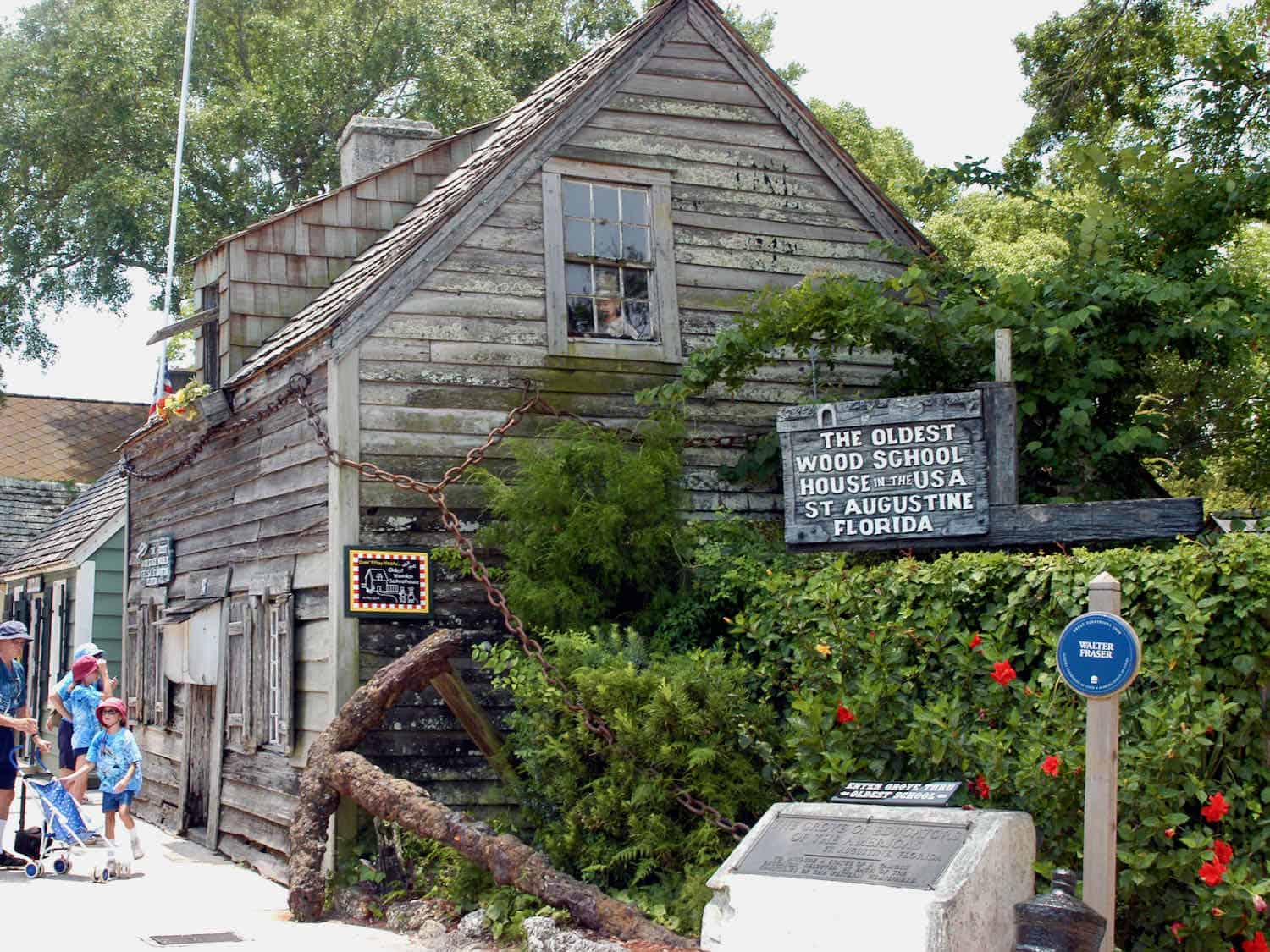
Most tour tickets are good for more than one day and allow riders to get on and off at points of interest. We took advantage of the trolley tour, which passed many of the town’s attractions.
Boomer Travel Tip
Purchase historic St. Augustine hop-on-hop-off trolley tickets in advance. Reserve now and pay later.
One of the main streets within the historic district is the pedestrian-only St. George Street, which is lined with unique shops and restaurants. In this historic district of the oldest city, my wife and I visited the expected “oldest house”, “oldest schoolhouse” and the “oldest drug store.”
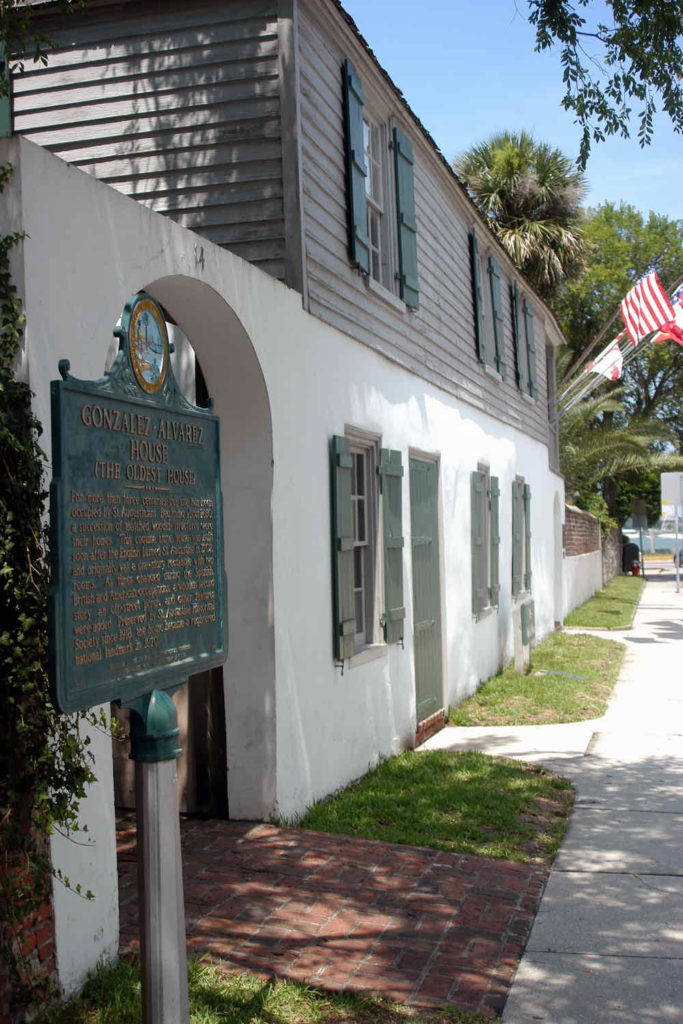
We learned of the history of the Oldest House, a National Historic Landmark, which is also called the Gonzales-Alvarez House. According to the National Park Service, the house is the “oldest surviving Spanish colonial dwelling in St. Augustine.”
The original hut on this site was built in the early 1600s. After a fire in 1702, the hut was replaced with a structure made of coquina stone. Guided tours of the Gonzles-Alvarez House begin every half hour.
Admire the Ponce de Leon Hotel
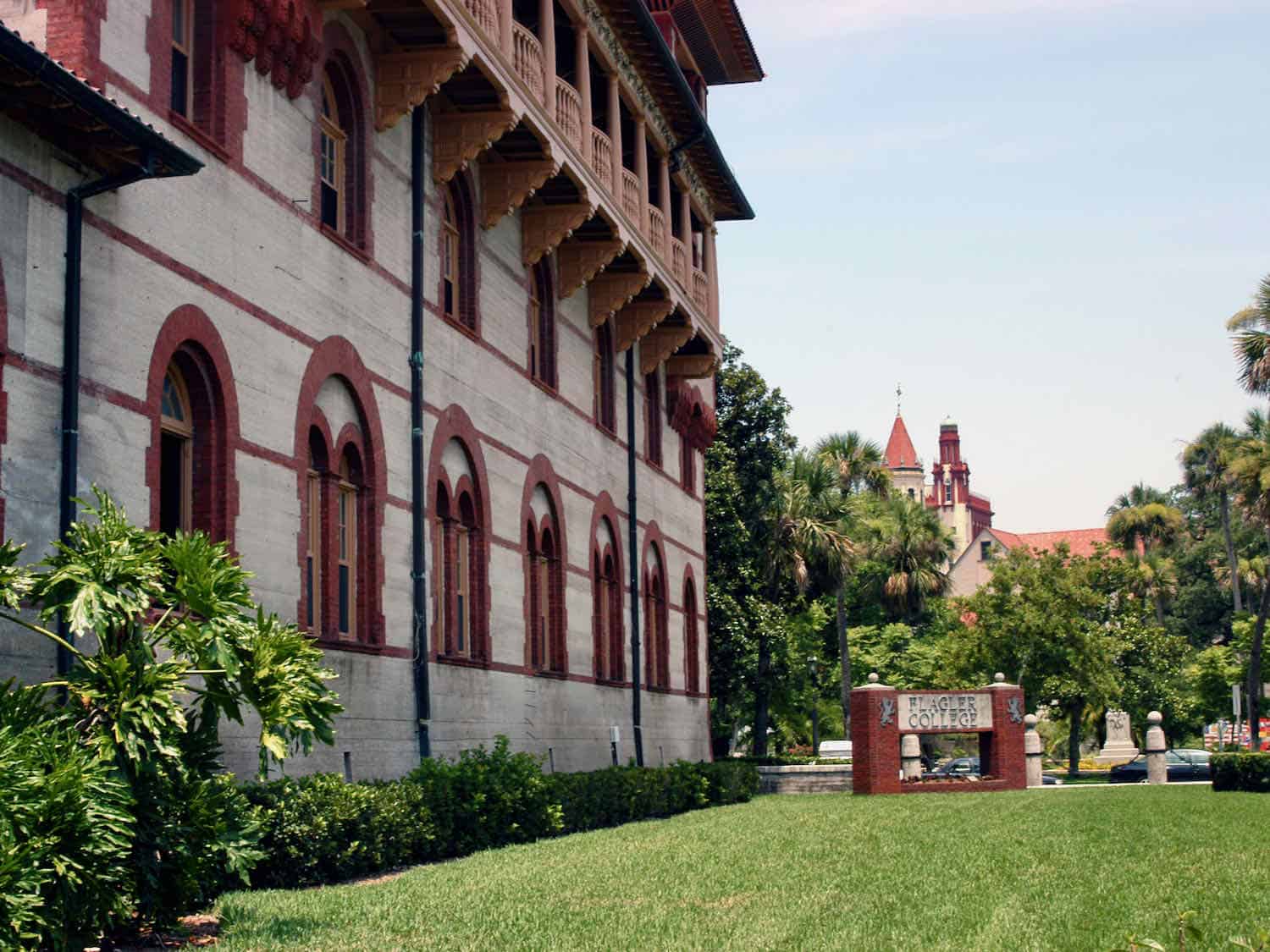
The Ponce de Leon Hotel, a lavish 18th-century Spanish Renaissance structure, was completed in 1888 by millionaire developer Henry Flagler, a railroad tycoon who was also responsible for the Florida East Coast Railway which traveled all the way to Key West. The Ponce de Leon Hotel is now home to Flagler College.
Located in the heart of St. Augustine, the former Ponce de Leon Hotel is a very impressive, instantly recognized building. Across the street is the former Hotel Alcazar, which houses the Lightner Museum with its collection of artifacts including examples of cut glass and Victorian art glass.
Visit Fort Castillo de San Marcos and the Colonial Quarter

The Fort Castillo de San Marcos still stands guard along the Matanzas River. The fort, now a National Monument, endures as the nation’s oldest and only remaining 17th-century stone fort.
Walking the ramparts or exploring the interior of the fort is well worth your time. If you have a National Park Pass, your admission fee is covered.
Across the street is San Marcos Avenue and the Colonial Quarter. This living history museum centers around life in colonial St. Augustine.
Stop by the Fountain of Youth and an old tree
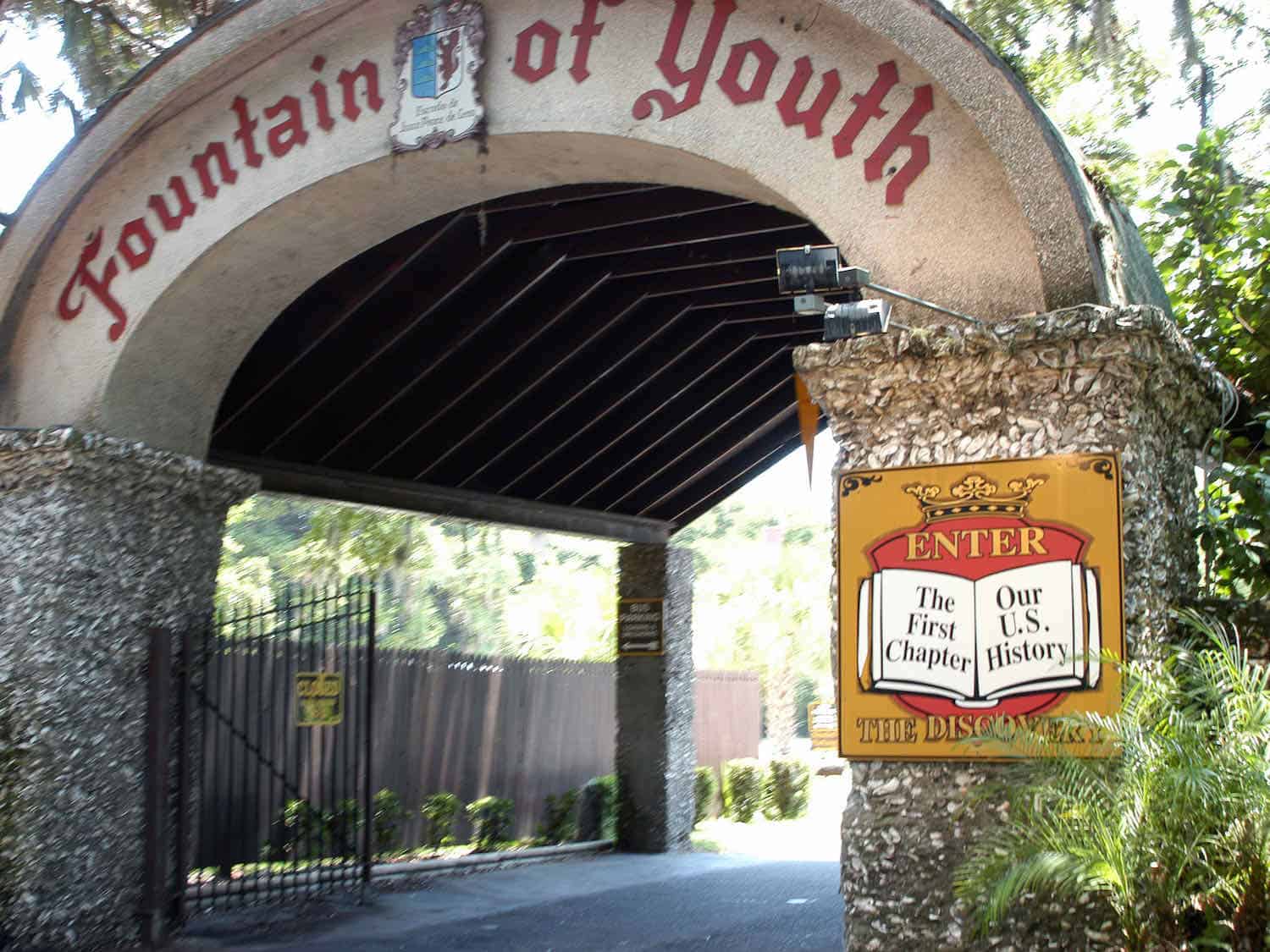
Just to the north of the historic district are two other notable landmarks. The Fountain of Youth Archeological Park (established in 1903) is said to be the explorer Ponce de Leon’s legendary spring.
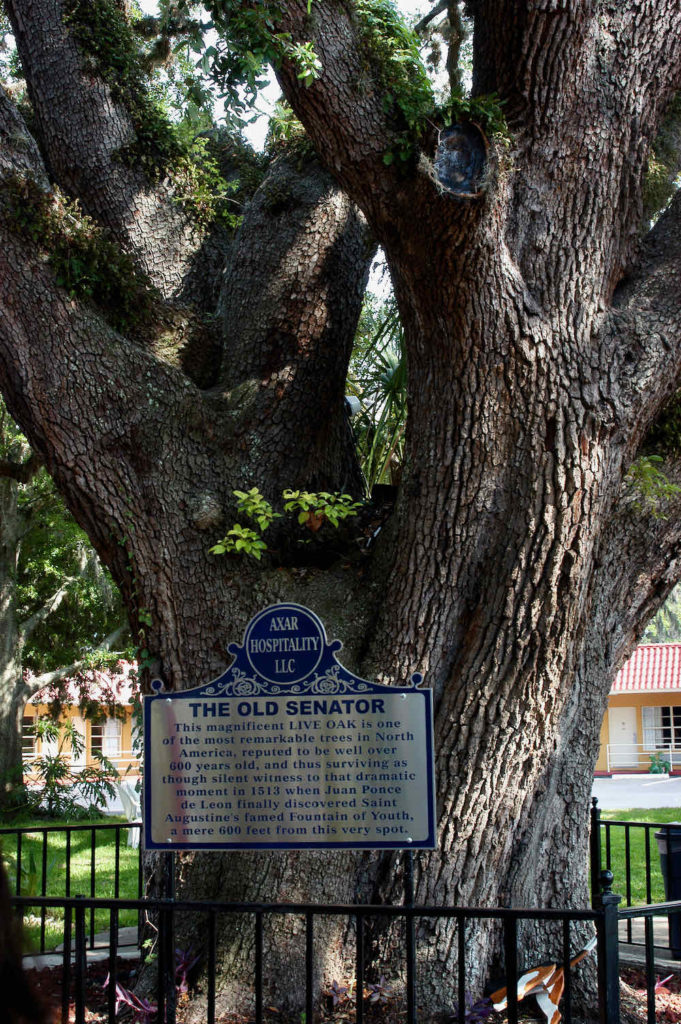
We visited the park’s Spring House which is a coquina building housing the original spring of Ponce de Leon. Near the park is the Old Senator, not a democrat or republican, but a 600-year old live oak tree.
Explore the St. Augustine Lighthouse
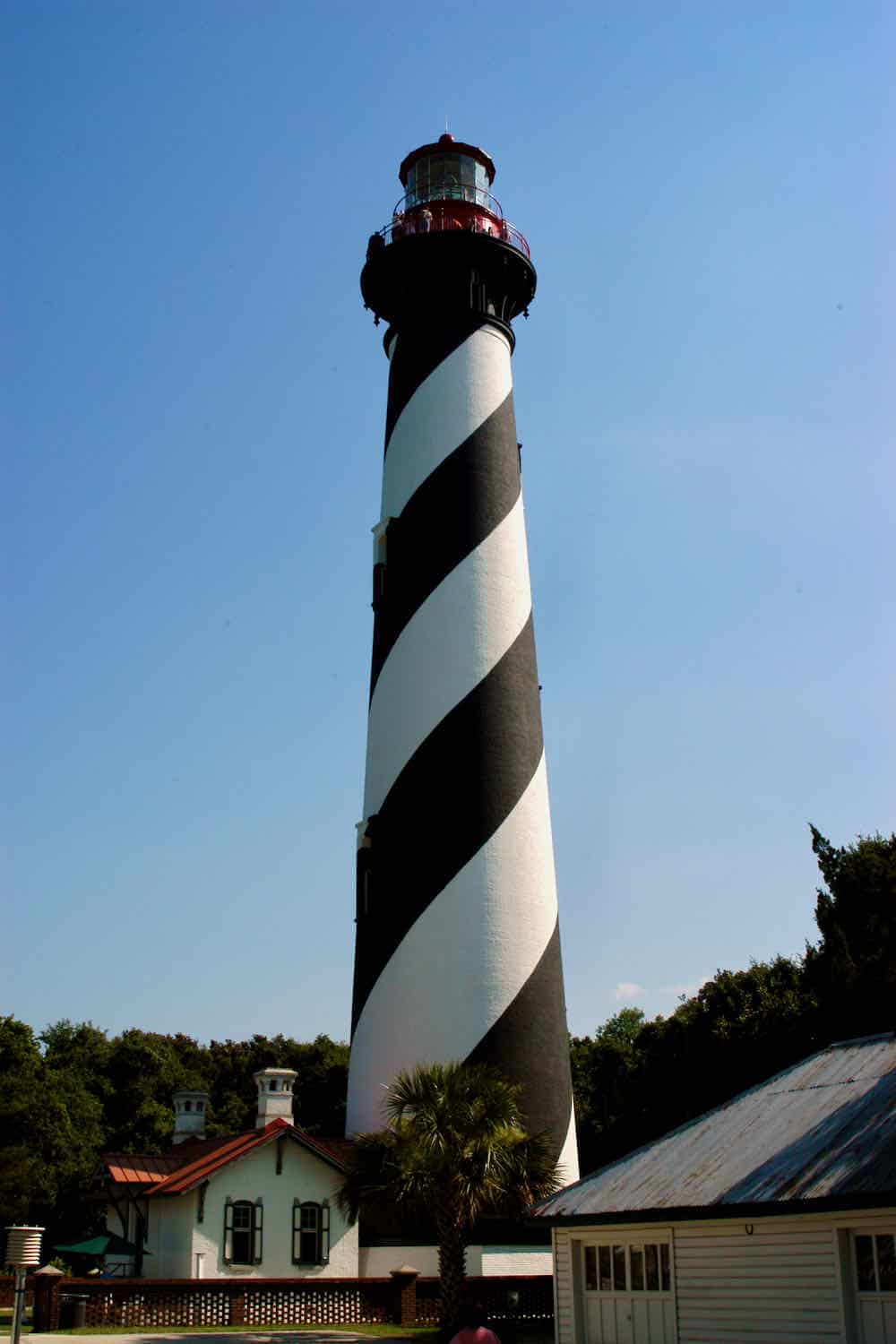
Lighthouses are always interesting attractions to visit and the St. Augustine Lighthouse (official website) is no exception. The lighthouse was built in the late 1800s and was manned from 1874 to 1955. Now St. Augustine Lighthouse and its out buildings serve as a museum.
We always attempt to climb to the top of all the lighthouses that allow it. There are 219 steps to the top of the 165-foot tower and the climb rewarded us with a panoramic view of the beaches of Anastasia Island, the city of St. Augustine Beach, Matanzas Bay, and the three bridges leading to historic St. Augustine.
To get to the lighthouse, Anastasia Island and its attractions, we crossed the beautiful Bridge of Lions, a drawbridge over the Intercostal Waterway. The bridge underwent renovation and was reopened in 2010.
St. Augustine has no shortage of outdoor activities either. Opportunities for tennis, golf, and water-related sports are prevalent and as varied as St. Augustine’s other attractions. A visit to the “nation’s oldest continuously occupied city” is a step back in history and a step we took.
Tips for visiting historic St. Augustine

March to May offers mild weather, less crowds and good prices. October to early December is a close second (but watch out for hurricanes). Summer months bring out the crowds and the heat. Winter can be chilly.
St. Augustine is a walkable city with many forms of paid transportation in the form of trolleys, buses and shuttles. Park your car at the hotel and explore by foot or hop-on-hop-off trolley for a hassle-free visit.
If your focus is on the historical center of St. Augustine, why not stay in an historical inn? We recommend St. George Inn, Casa de Solana Bed and Breakfast, or the Casa Monica Resort and Hotel.
Visiting Castillo de San Marcos National Monument, St. George Street, the Colonial Quarter, and St. Augustine Lighthouse are must-do’s on a trip to St. Augustine. The walkable city lives and breathes its historical roots.
St. Augustine is a city for strolling and browsing so don’t rush through it all. Two days will allow you to see everything but three days will be even better.
Jacksonville International Airport is about 40 miles away. Or fly into Northeast Florida Regional Airport located just a few miles from the historic district.

